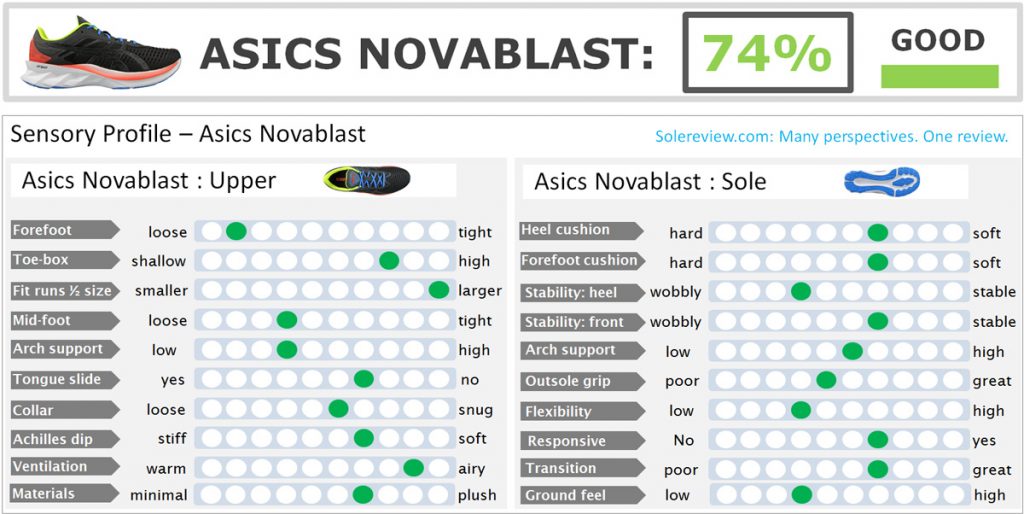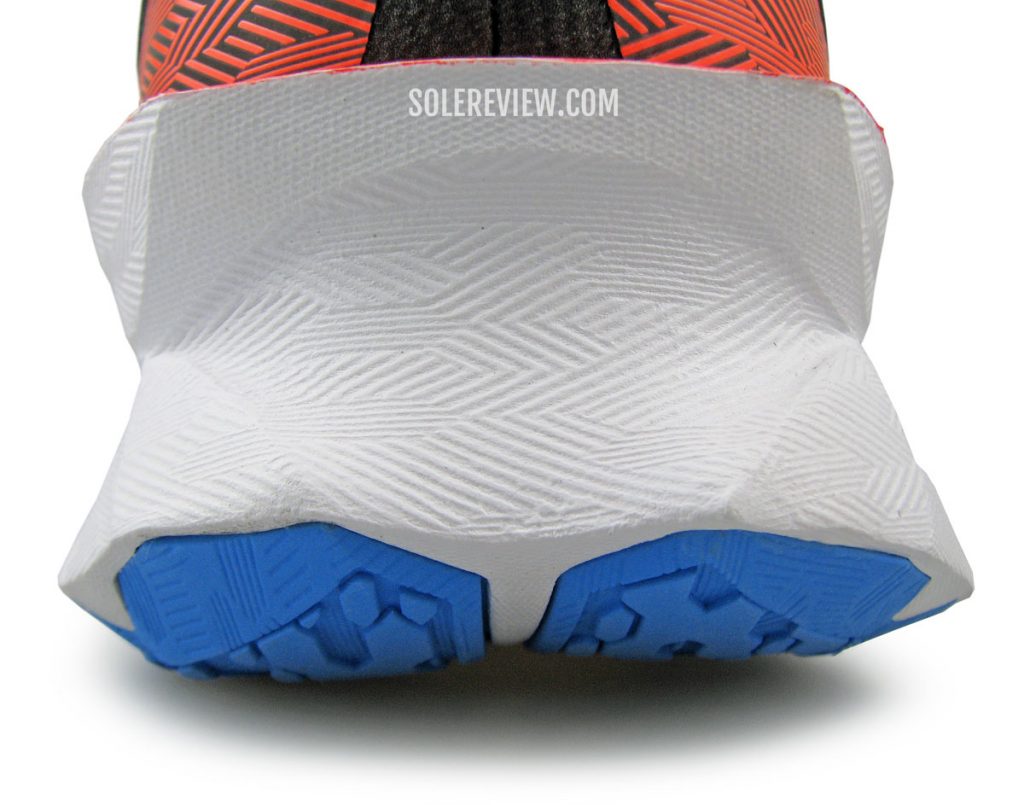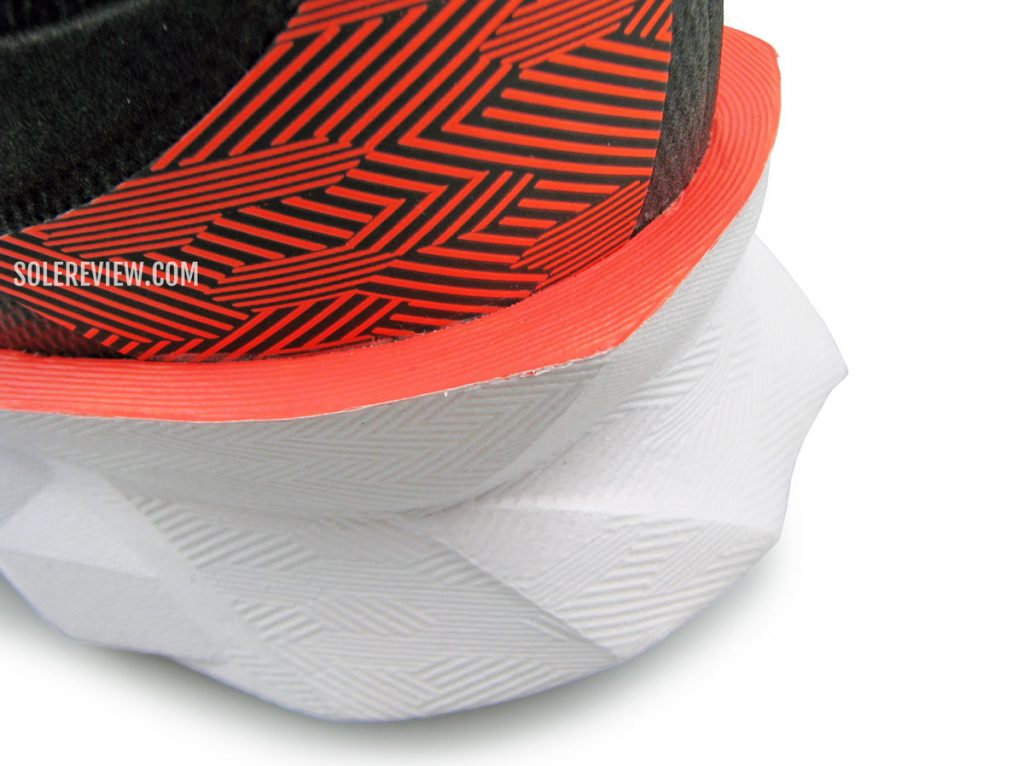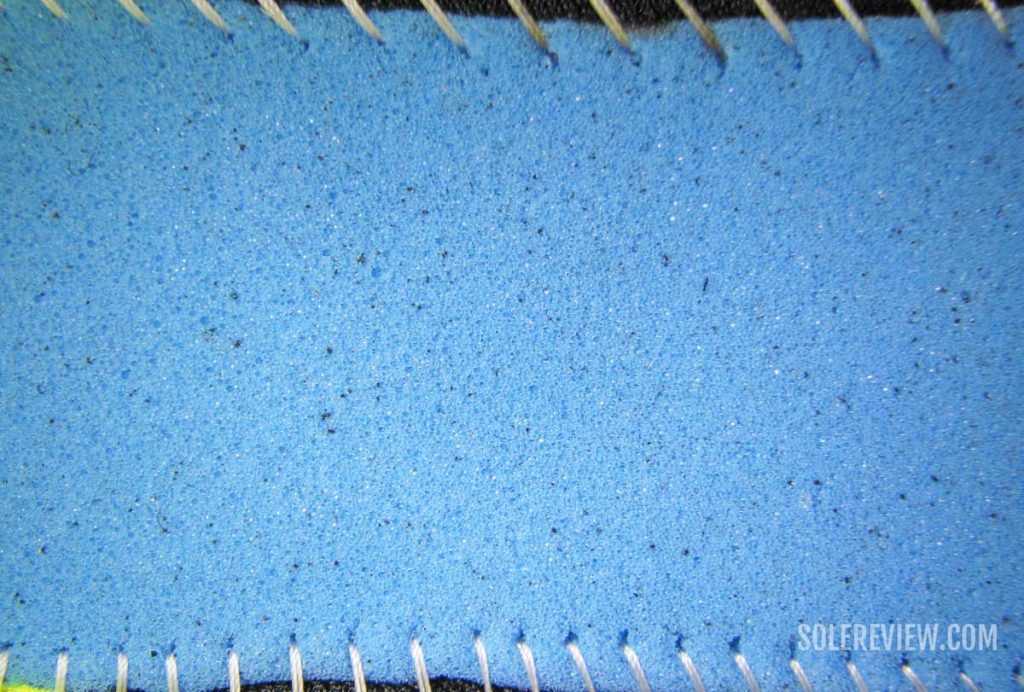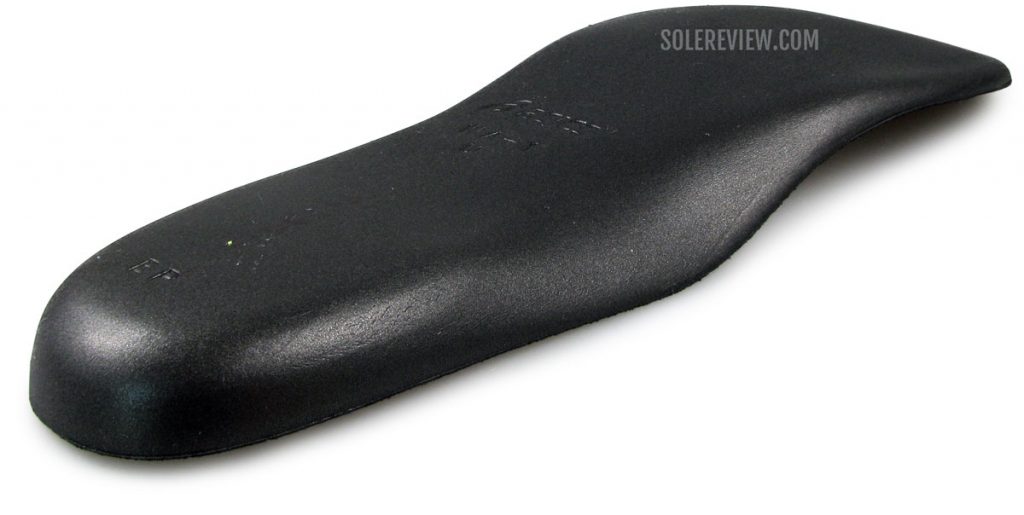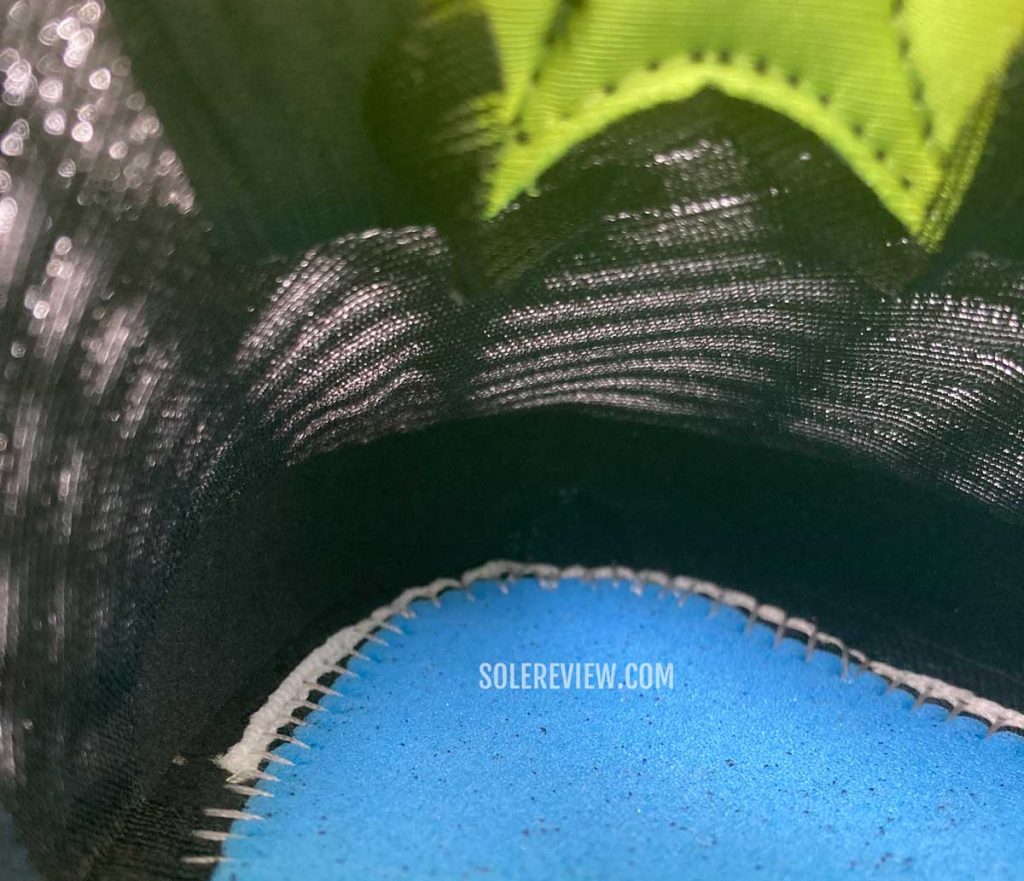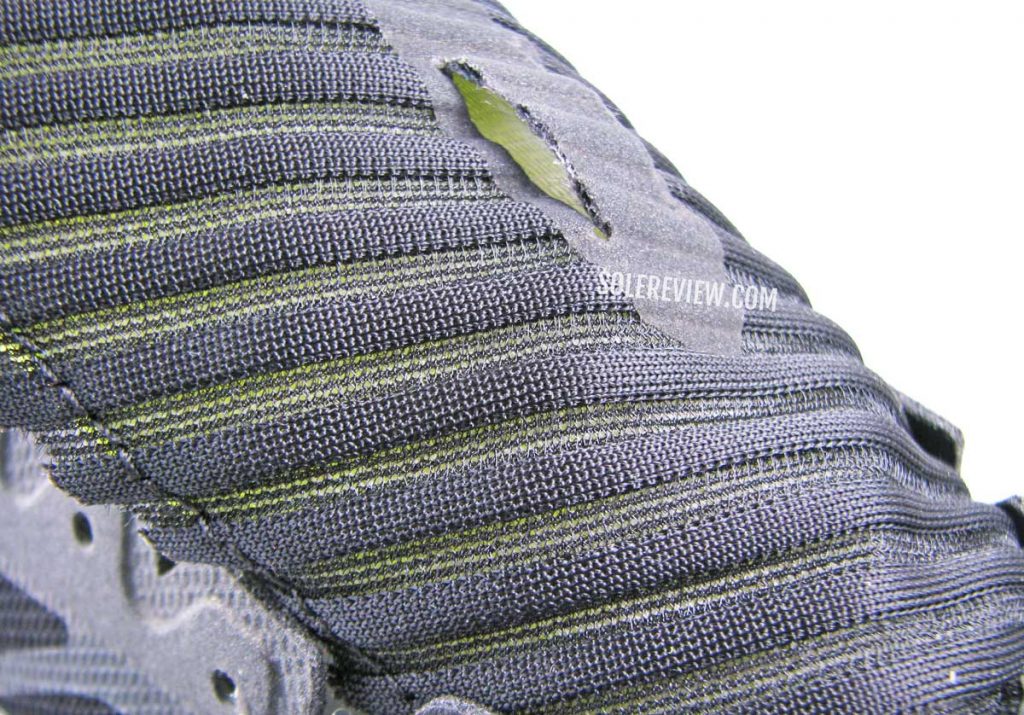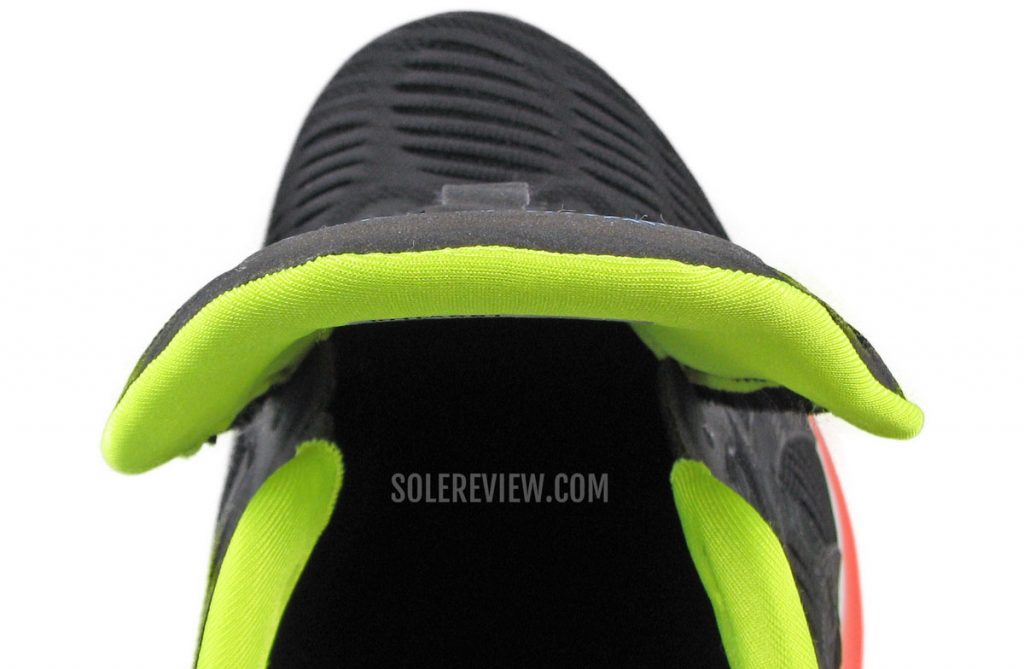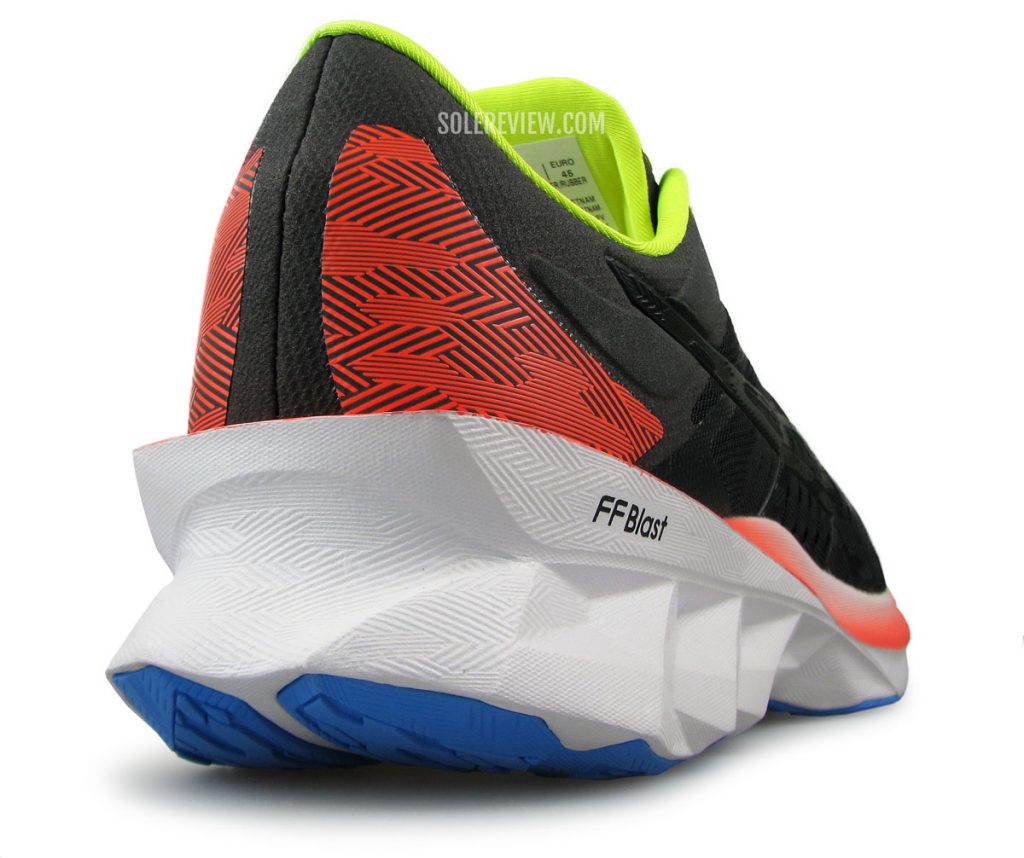INTRODUCTION
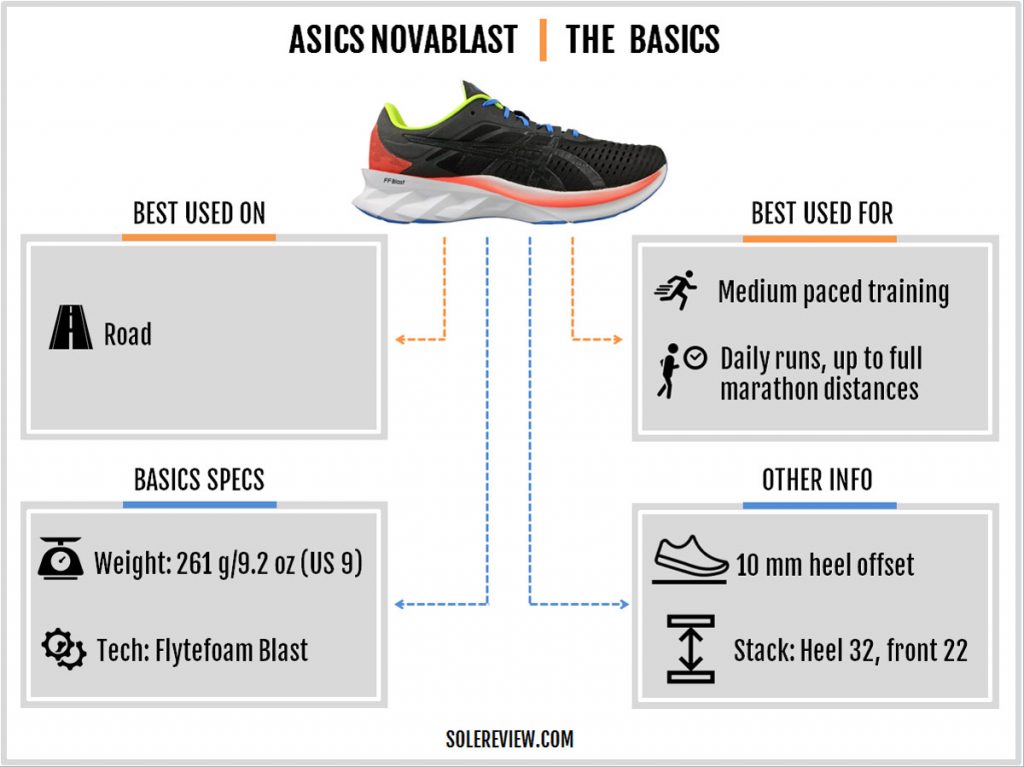
Nothing makes a shoe reviewer happier than a brand that suddenly acquires the ability to surprise.
Long-time readers know how Solereview has treated Asics over the last few years – a has-been brand with nothing new to show except for bland variations of Gel-meets-Flytefoam-meets-plastic shank.
They deserved it too. After all, if a ‘new’ Nimbus review every year was little more than a toe-box room and midsole face-lift, then it becomes frustratingly difficult to maintain a charitable view.
Then the Asics Glideride happened.
We thought, ok – that was new and unexpected. While the Glideride took some inspiration from the plate-in-a-midsole movement, it did not feel contrived. It added value to the running shoe ecosystem while heavily leaning on design elements from Asics’s playbook.
Asics didn’t stop there. At the time of writing this review, we have several other Asics shoes undergoing testing. There’s the Nimbus Lite 2, Kayano Lite, the Metaracer, and several more – and all of them add new flavors to the assortment.
While the new models feel vaguely inspired by the current industry trends, they possess a design signature that cannot be mistaken for anything other than an Asics.
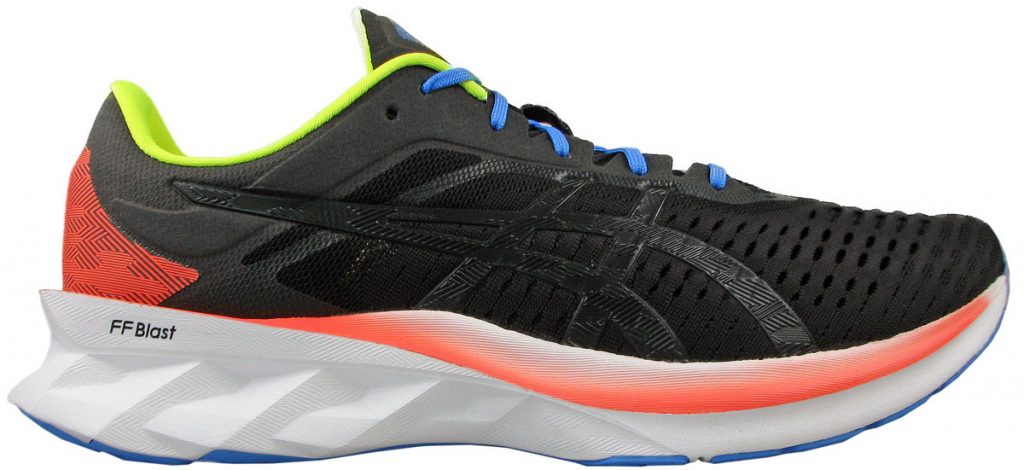
The Novablast also belongs to the new breed of Asics running shoes, the kind that melds old-school Asics traditionalism with a refreshed fit and ride character.
The Flytefoam ‘Blast’ foam – presumably a proprietary EVA blend – is soft, yet lightweight and efficient enough for smooth transitions. The ‘Blast’ isn’t merely a label; it does ride differently than other Flytefoam variants like the ‘Propel.’
The signs of Asics-ism are apparent in areas such as the 10 mm heel-to-toe offset, which happens to be a (more) conservative approach than the prevailing 4-8 mm trend. A 10 mm offset isn’t particularly disadvantageous; it loads most of the cushioning in the rear and appeals to a larger audience due to its Achilles-friendly dynamics.
Then you have design markers like the no-sleeve tongue and the unadvertised ‘Guidance line’ under the midsole.
Speaking of performance, the Asics Novablast isn’t like the Hoka Clifton or New Balance 1080. The stack heights of 32 mm and 22 mm hint at the shoe’s maximal cushioning intentions. But on the road, it certainly doesn’t feel that way.
It’s a comfortable daily or long-distance trainer that feels like a cross between the Hoka Clifton and the Saucony Kinvara but without the lower heel offset of the said shoes.
In other words, the Novablast has the cushioning that makes long runs comfortable yet gives off an efficient vibe that’s reminiscent of the Kinvara. Even though the midsole is molded out of Flytefoam, the ride is unlike any other Asics running shoe, and the Japanese brand has built a platform with immense future possibilities.
It’s not perfect. The Novablast package includes a few quirks, and the said idiosyncrasies limit the shoe from achieving its full potential.
And it’s not so much about the ride quality – except for the rearfoot stability – but rather, the upper fit. The upper fits long in the front – nearly a half size larger – and that ends up having unintended and undesirable consequences on the overall character.
Did we pique your interest? Read on.
And if you’re wondering about the 74% score, don’t read too much into it. That’s only due to the heel stability and the inconsistent upper fit, and not because the Novablast is inferior to a shoe that scores in the 80’s.
THE RIDE EXPERIENCE
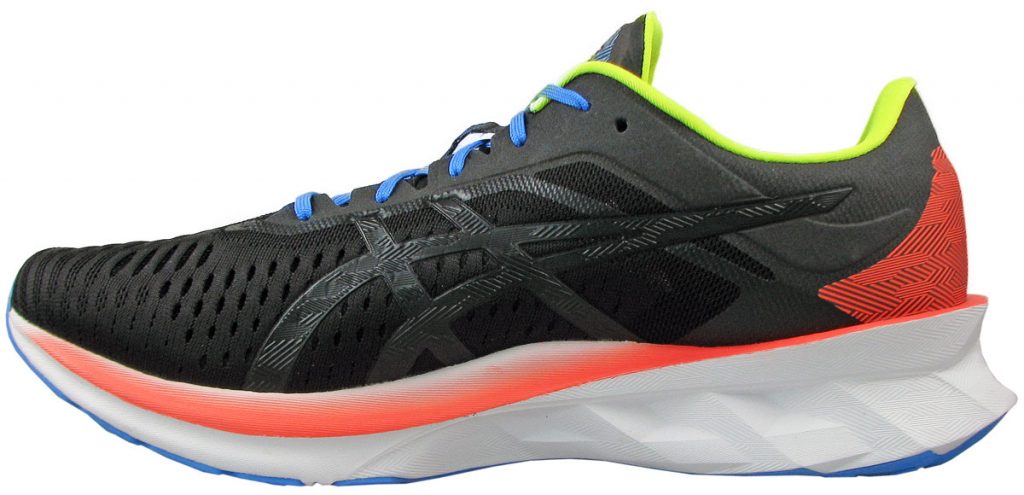
Though we’re reviewing the engineered mesh version of the Novablast, another variant is due for release. That’s the Novablast with a knit upper – presumably targeted at cold-weather running.
It’s important to make that distinction because the quality of fit influences the cushioning character. And just how on earth does the upper fit have to do anything with cushioning?
Many years ago, we reviewed the Flyknit Lunar 3 – a running shoe with an identical midsole design and density as the V2. However, the ride felt different. Which was surprising considering that nothing had changed.
But something had changed, after all. The updated heel design shifted the foot’s position over the midsole, thus missing the cushioning ‘sweet spot.’
The Novablast fits a half size larger within a roomy forefoot. Consequently, the foot isn’t where it needs to be over the midsole. In the front, the foot misses the Goldilocks zone of the heel spring and cushioning stack.
Assuming the runner doesn’t go a half size down, the foot will miss the exact spot where it needs to be during the loading process. Though the Novablast has a high toe-spring, the roll-over effect is diluted.
While the transitions on the Novablast are good overall due to the single-density midsole and features like the transition groove, it could have been better.
A looser toe-box also affects the cushioning delivery. If there’s too much play inside the upper, the shoe is not in the best position to deliver optimal levels of cushioning.
It’s also worth mentioning that the forefoot midsole doesn’t a curved base that keeps the foot aligned. Nor does it have a supportive outwards flare that we often point out in other reviews. Mizuno executes this particularly well, and Brooks and Nike to some extent. The foot resides over the Novablast’s relatively flat forefoot base, so the spacious upper doesn’t do a great job at keeping the foot centered.
We noticed that the forefoot tends to load on the inner/medial side during the transitions. While it doesn’t slide off the midsole edge, the cushioning feels biased towards the inner side. The Hoka Clifton 7 also has a spacious forefoot, but the area leading from the arch to the forefoot is nicely filled in, thus keeping the foot aligned.
It’s no surprise that running shoes with a snug upper deliver better responsiveness and/or ground feel. A midsole that is firmly pressed against the foot is better positioned to deliver its full cushioning potential
The rear is relatively unaffected by the sizing – from a ride perspective that is. After all, this is a shoe with stack heights of 32 mm and 22 mm, respectively.
The lower level of stability is a recurrent theme for the Novablast, but that’s owing to the sidewall design and location of the transition groove on the outsole.
When viewed from the back, the midsole has a scooped profile on both sides. The actual sidewall is pretty high and ‘cups’ the foot – meaning that the sidewalls are higher than the base of the foot.
The rims are also very pronounced with a thick, painted, angular edges. On the bright side, these elements make the Novablast’s midsole visually interesting.
The scooped design not only makes the base slimmer but increases the compression. While this helps the cushioning, the overall stability is below the desired level.
And mind you – the Novablast’s midsole isn’t overly soft. It’s fairly resilient, and as like said, midway between the softness levels of the Saucony Kinvara and Hoka Clifton.
Stability is decent on straight runs but we’d advise against using the Novablast on treadmills or even flat trails. That, or if you weigh north of 200 lbs and have a propensity to heel strike. While midfoot/forefoot strikers are relatively unaffected, a snugger upper would have further improved stability.
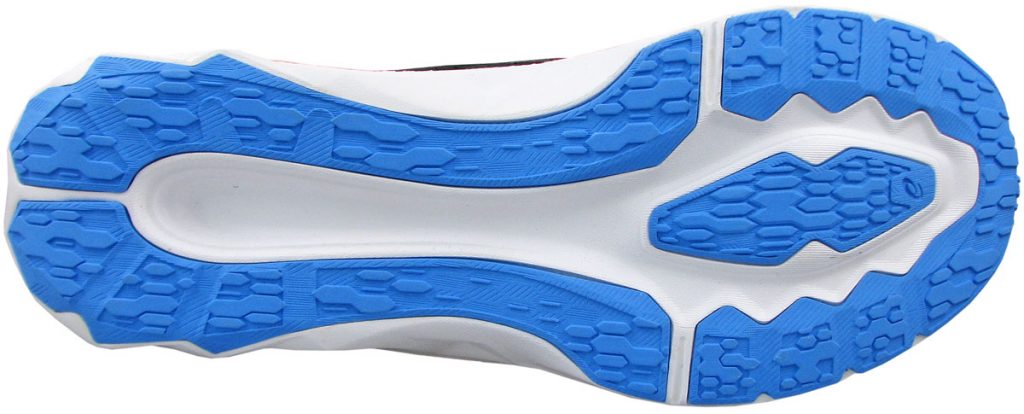
The transition groove under the midsole has a somewhat unusual design. Instead of beginning at the heel edge – like how most running shoes do it – it originates well past the heel edge. We imagine that the stability would benefit if the Novablast’s groove was altered to something that the Pegasus 37 has. The groove from the crash pad blends into the main transition channel, thus resulting allowing the latter to splay better when loaded.
That was the minutiae, things that any potential purchaser of the Novablast should be aware of.
But what does the Novablast do, and who is it for?
Some may see it as Asics’ answer to the Hoka Clifton – a cushioned shoe that melds ride comfort with transition efficiency. To that, we say: it’s somewhat similar, but not quite.
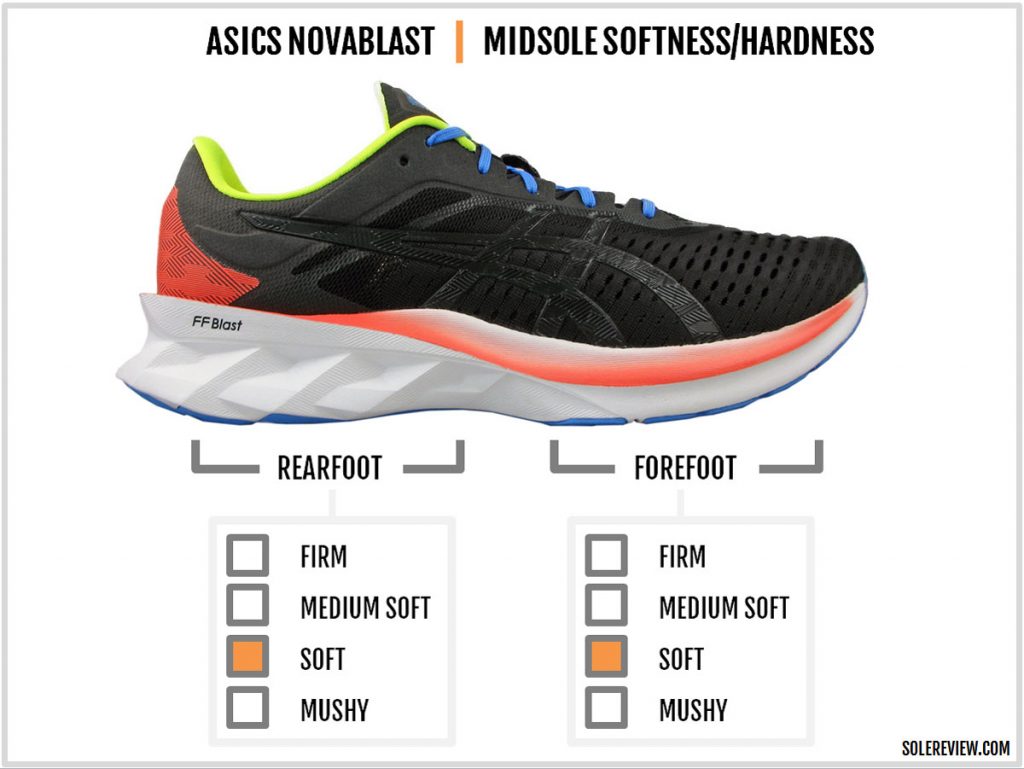
It would be incorrect to label the Novablast as a ‘max cushion’ shoe, because that’s not what it is.
That’s evident in the relatively slimmer mid and rearfoot that translates into a lower midsole volume. And while we won’t call the foam density firm, the Nova isn’t New Balance 1080 or Hoka Clifton soft either.
Sure, the molded insole and foam lasting (Ortholite) act as comfortable toppers. But they only increase the step-in comfort without having a significant impact on the overall midsole cushioning. Like many shoes with a superficial layer of softness, the Novablast behaves differently on the road than on the shop floor.
It’s also worth bearing in mind that the outsole is just made of four large pieces of rubber. They are contiguous sections that do not telescope in and out of foam pods, like how the Clifton does it. Speaking of the outsole, the traction is decent but not great. There’s not much rubber coverage under the forefoot, and the lug design isn’t aggressive.
In short, the Novablast is amply cushioned for most distances without feeling lazy. Be it easy cruising or going harder at 7 min/mile (4:30 min/km), the Novablast performs ably under both circumstances.
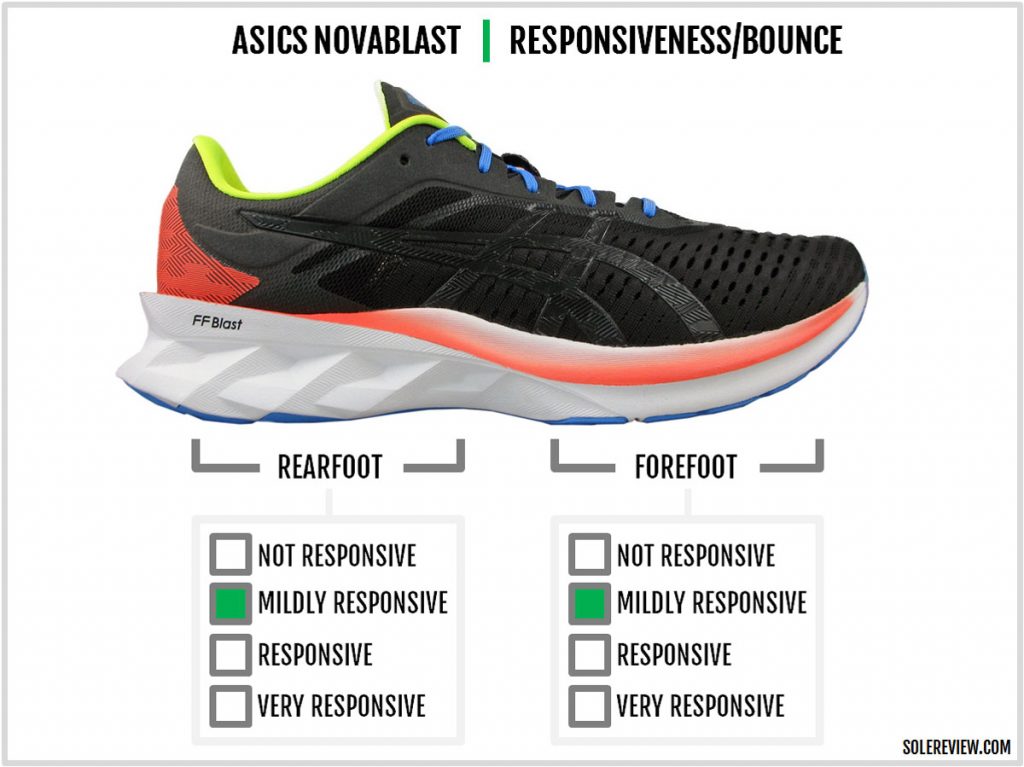
There’s a certain level of resilience that bodes well for the transition quality. While the midsole isn’t as responsive as newer Pebax-based forms, it feels adequately peppy while possessing ample amounts of cushioning comfort. Even with the relaxed forefoot, the toe spring helps with the transition.
The Novablast lacks precedent in Asics’s footwear history, so it’ll be interesting to see where this leads.
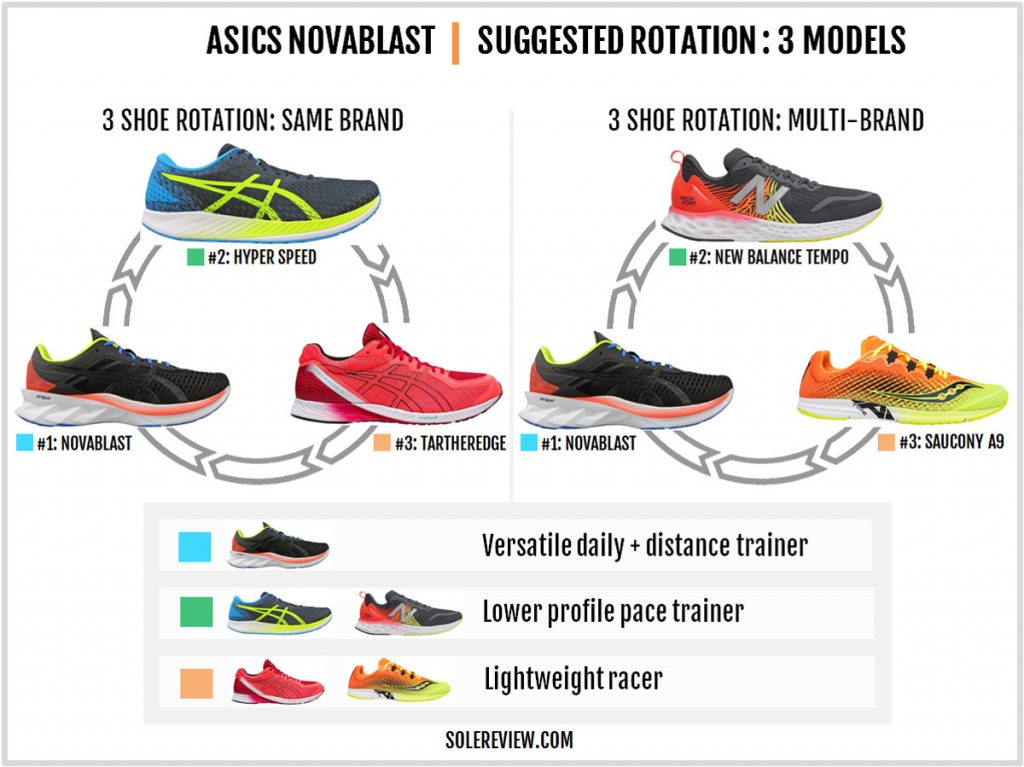
There are several ways to pair the Novablast. For race-day needs, one could either drop serious cash on the Carbon-plated Metaracer or go old school with the less-expensive Tartheredge 2. The non-Asics racing flat options could be the Saucony TypeA9 or New Balance 1400V6 – both are excellent for speed-work.
The new Asics Hyper Speed is a great in-between option – it bridges the functional gap between the cushioned Novablast and the racers. If not the Hyper Speed, the New Balance Tempo or the Brooks Launch 8 are worth considering.
IS THE NOVABLAST DURABLE?
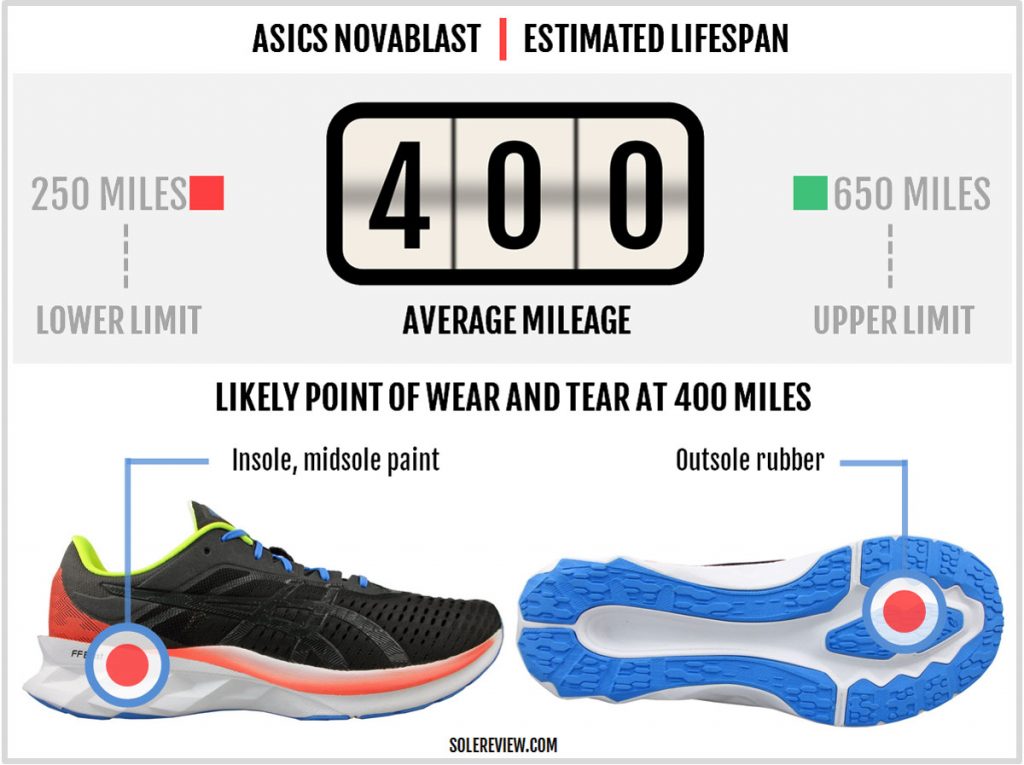
The outsole slabs on the Novablast are very unlike Asics. The Japanese brand usually deploys thick slabs of rubber on most of its models. That isn’t the case here; the Nova’s outsole has relatively thin strips that flex along with the midsole.
Though we’ve seen some initial wear and tear on the rubber, we don’t think this is going to be an issue long term. Softer rubber that works well with the midsole is also good at spreading the abuse from landings and transitions.
We’ll see. This section will be updated if the Nova’s long-term ownership suggests otherwise. For now, we’ll maintain the forecast at 400 miles.
THE UPPER DESIGN AND FIT
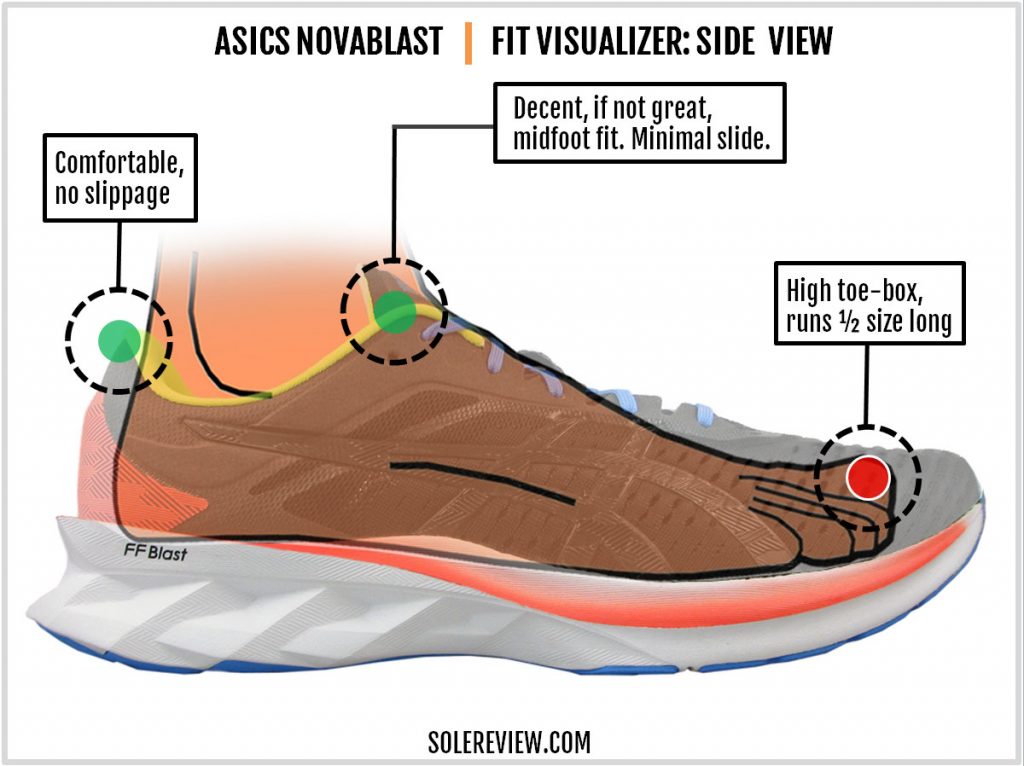
We’ve already spent a lot of time talking about the upper, so you know it fits – a half size larger.
That being said, there’s a fundamental difference between a long-ish fit and a sloppy interior. Even with its sizing discrepancy and effects on the cushioning, the fit isn’t unwearable.
And if you buy a half size smaller, the internal bumper and breathable upper will still have plenty of toe-box room.
The long-ish fit is a shame, because the upper has a couple of neat tricks. One of them comes in handy when trying to adjust the fit.
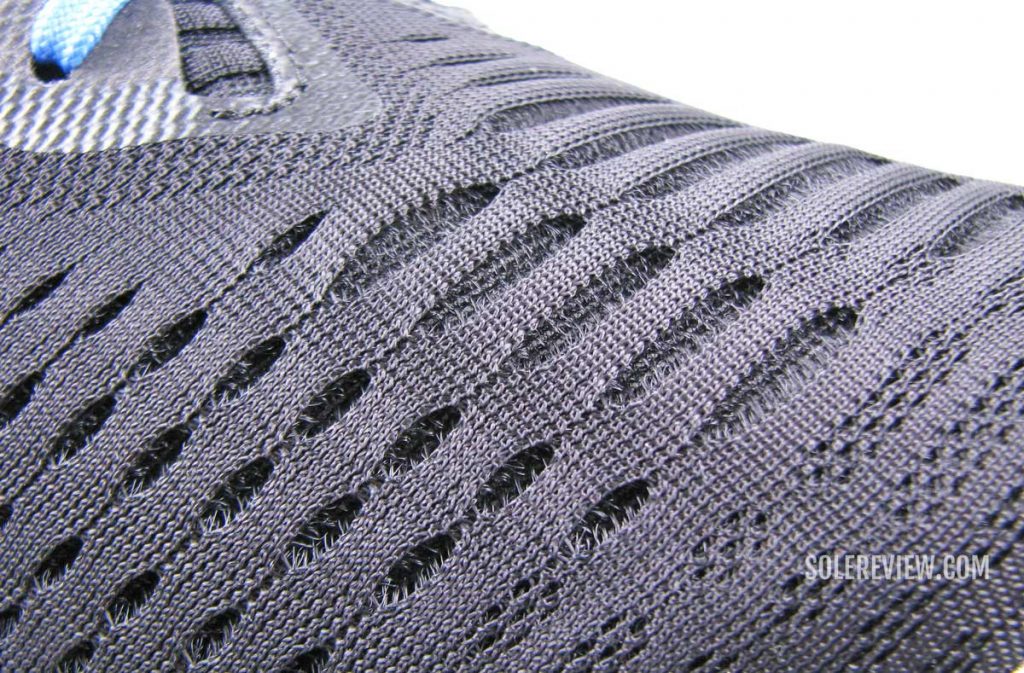
Look at the top left corner. The teardrop-shaped notch allows the lacing to cinch tightly without gathering the upper.
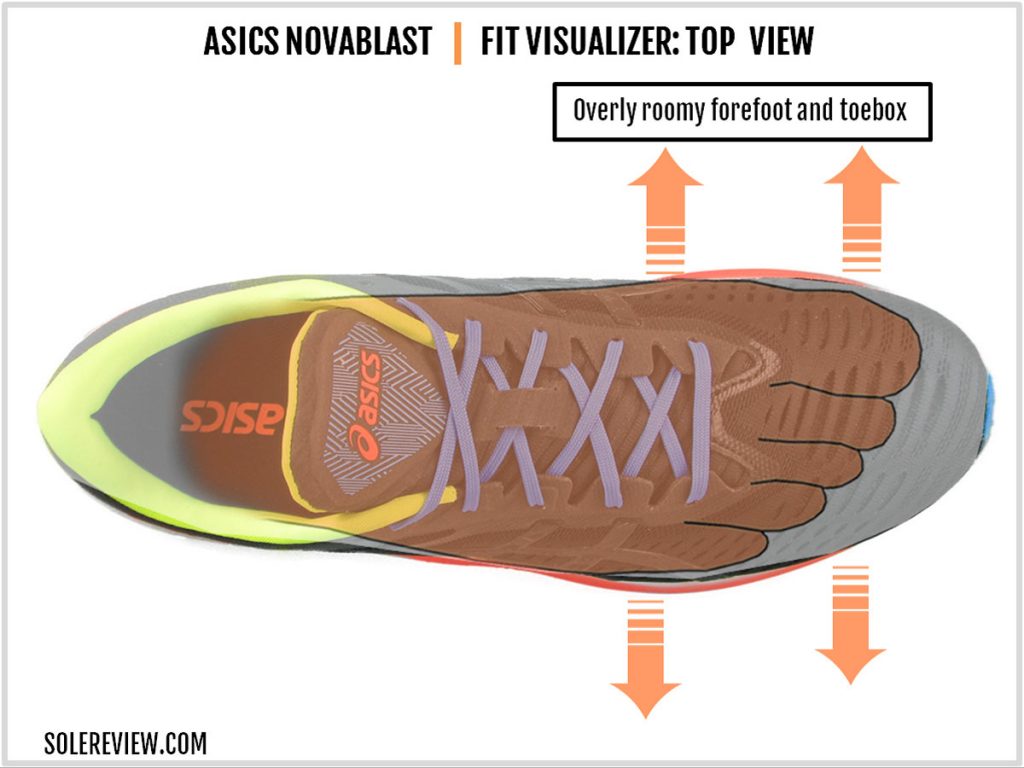
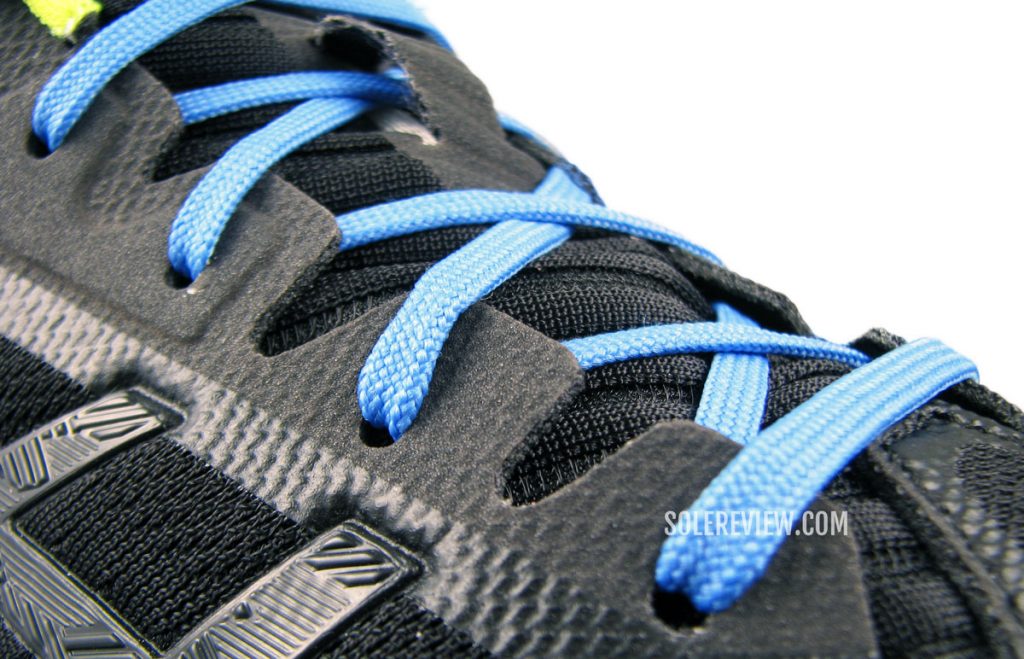
There are two teardrop-shaped notches in front of the first lacing row. Many runners will cinch the laces tight to get a snugger fit, and these notches prevent the forefoot from bunching. This is a clever lacing trick that not many running shoes have.
The second cool thing is the tongue flap. There’s no internal gusset, so the (relative) lack of slide after a run was a surprise.
As it turns out, Asics uses a time-tested Mizuno trick here. The tongue has a tapered design that begins with a very wide flap. A wide flap ‘fills’ in the gaps on either side, so the tongue has nowhere else to go. It just stays there.
The tongue is a bit long and rides over the instep, but it isn’t uncomfortable.
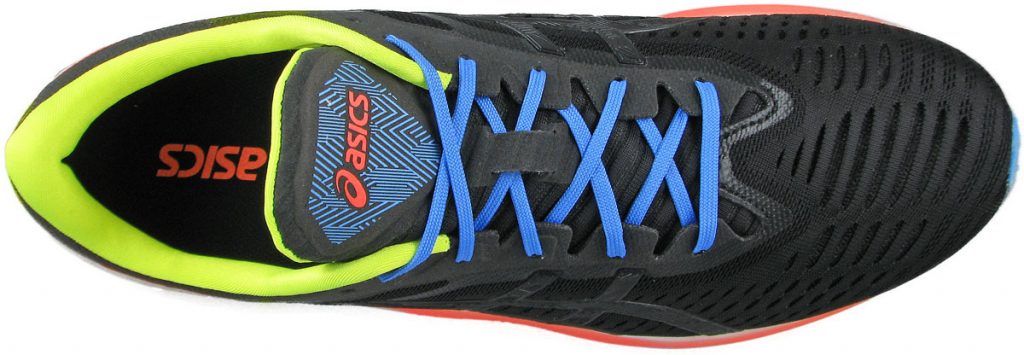
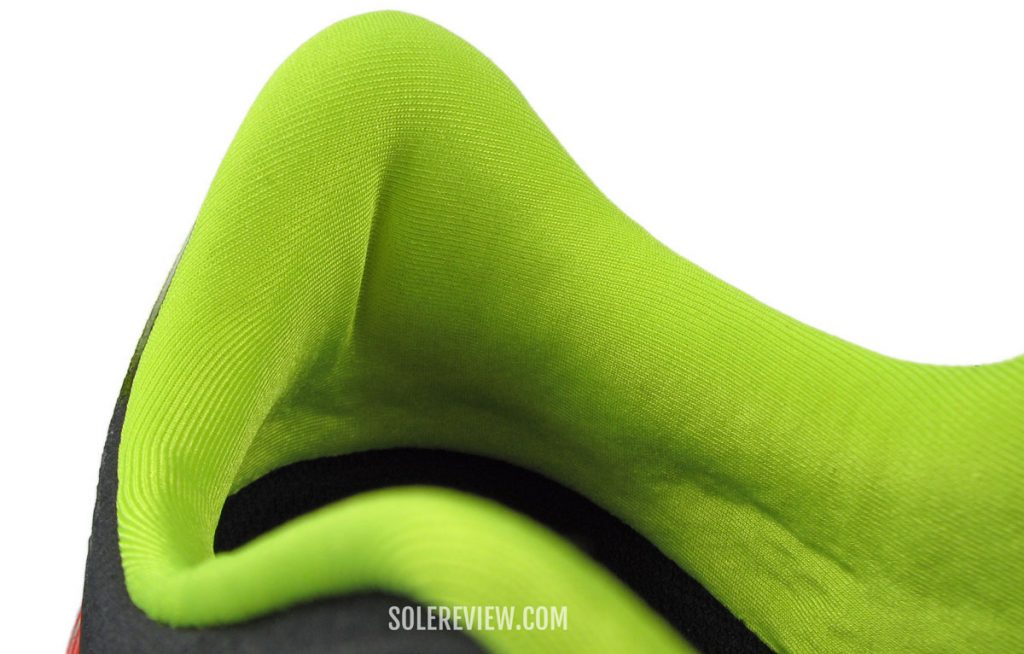
The heel grips surprisingly well, considering the longer sizing. While the padded collar helps, it’s the curved heel counter that makes the grip effective. And though it’s not obvious, you should know that the geometric print pattern on the heel is reflective.
We hope that Asics addresses the forefoot fit in the next iteration.
PROS AND CONS
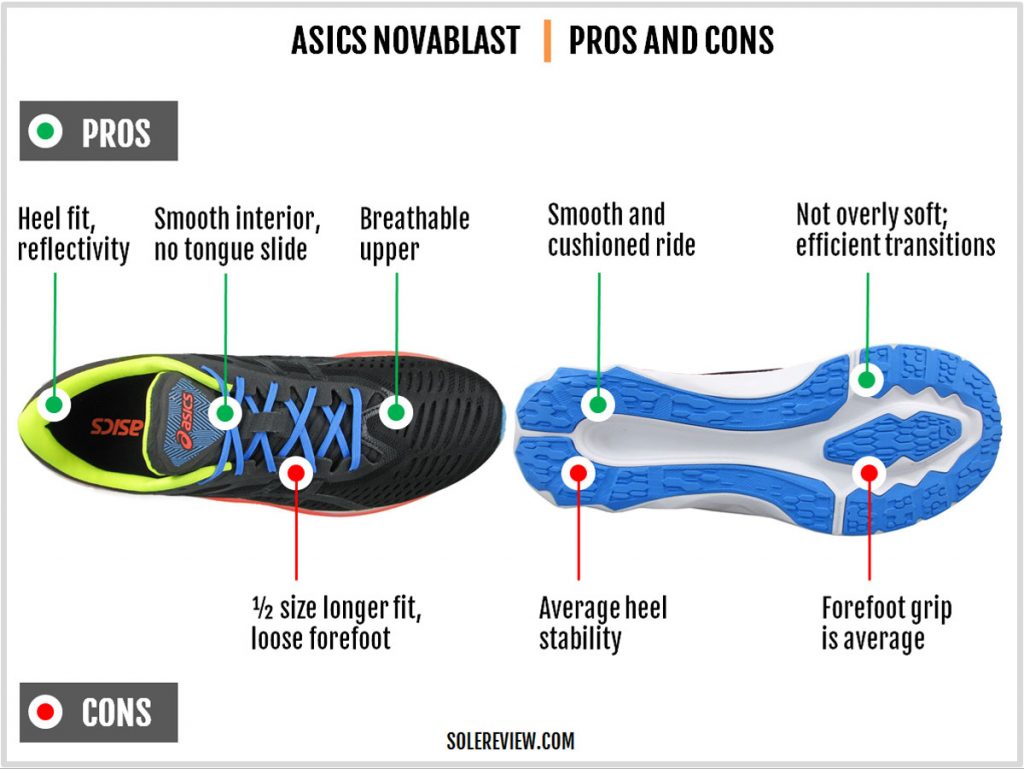
The sizing and heel stability are the two notable shortcomings of the Novablast. Add to that the lack of widths too; an optional ‘B’ (narrow) sizing would be very welcome.
The ride quality is what makes the Novablast fun, and that’s evident in its commercial success. It strikes the right balance between comfort and transition efficacy, so it’s versatile enough for daily runs, thresholds, and long-distance runs.
THE ASICS NOVABLAST vs. DYNABLAST
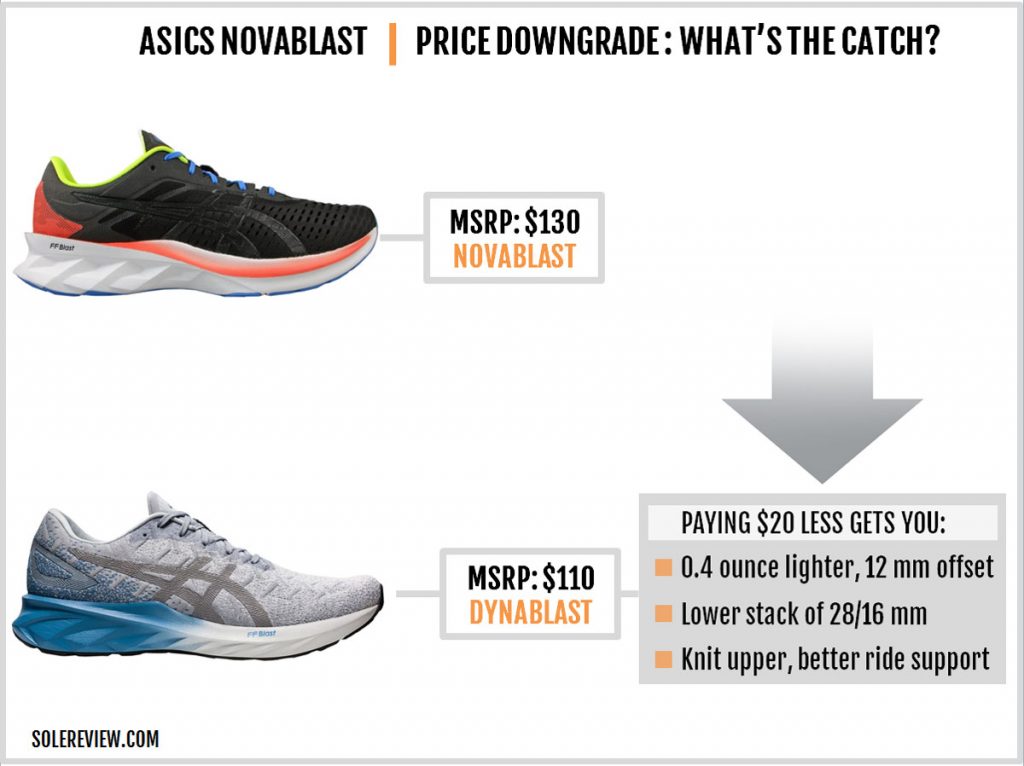
The Dynablast is a serious contender if a slightly snugger upper and increased ride stability is a preference. The Dynablast uses a knit upper, so the forefoot isn’t as roomy as the Novablast.
The less expensive Asics also uses the medium-soft Flytefoam Blast, but its lower stack height – 4 mm lower at the back and 6 mm under the forefoot – gives the ride improved stability. On the flip side, the Dyna isn’t as cushy.
SHOES SIMILAR TO THE NOVABLAST
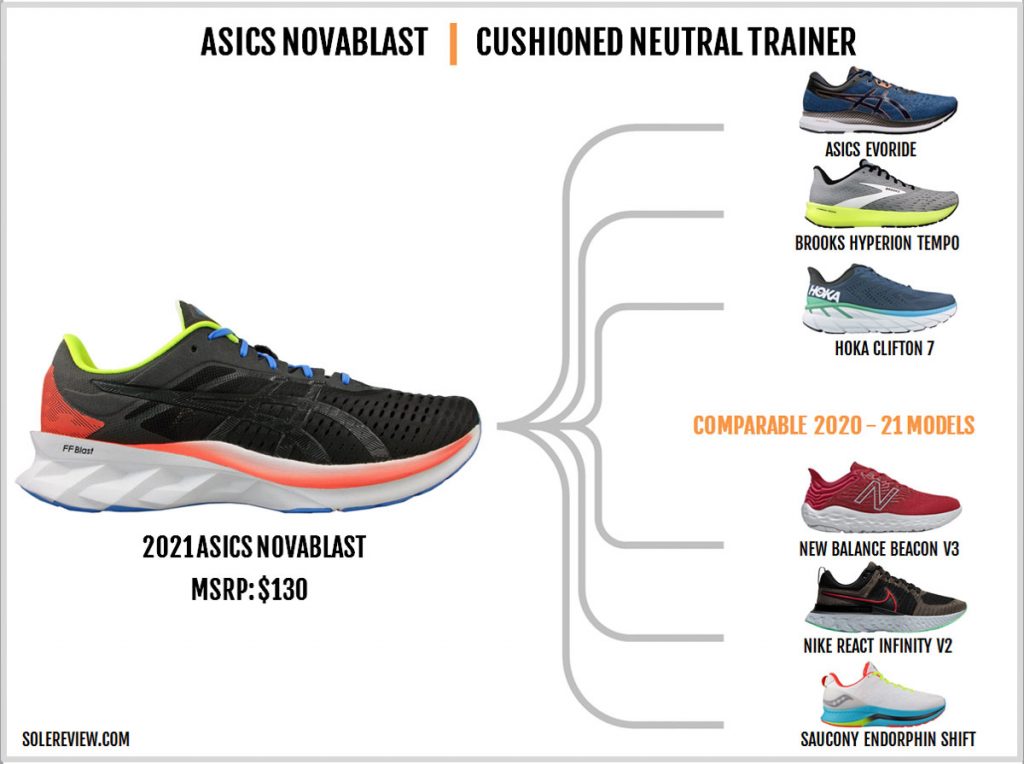
This list isn’t as cut and dry as our usual charts, but we’ll try. That’s because it’s relatively hard to match the Novablast’s combination of its ride quality, 10 mm offset, and $130 retail.
Besides the Dynablast, the Asics Evoride is comparable at a conceptual level. At 5 mm, it has a much lower offset, but what it has in common with the Novablast is the distance-friendly ride and high toe spring.
We’ll put the Saucony Endorphin Shift in the same class, except that it’s firmer, more supportive, and has a lower heel-to-toe gradient. The much lighter Brooks Hyperion too, delivers a heady mix of lightweight cushioning and speed-oriented road manners. Ditto for the New Balance Beacon V3 – a firm-ish but cushioned pace trainer.
Among the softer options are the Nike React Infinity Run V2 and Hoka Clifton 7. While they have a noticeably softer ride than the Novablast, they manage brisker paces with aplomb.

